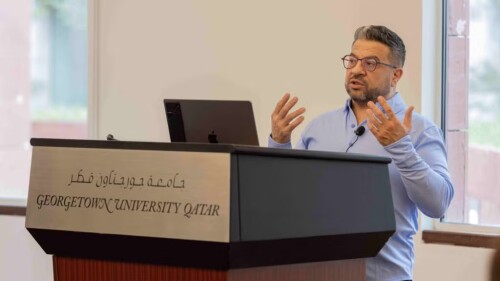Clockwise from left: former Iraqi President Saddam Hussein, the graves of his Kurdish victims in Halabja, and the graves of American soldiers who gave their lives attempting to build a better future for Iraq. |
Remember when Sean Penn went to Iraq in December of 2002 in a bizarre attempt to meet with Saddam Hussein and prevent the inevitable U.S.-led invasion? Upon returning home, the activist/actor told Americans they were being lied to and that Iraq was “a happy place. They had flowery meadows and rainbow skies, and rivers made of chocolate, where the children danced and laughed and played with gumdrop smiles.”
Actually that line comes from the parody of Sean Penn in Team America: World Police (2004). But Penn’s actual performance in his greatest role as Saddam’s “useful idiot” (the phrase is Lenin’s) may be his most enduring work.
The assertion that the world would be better off if Saddam Hussein still ruled Iraq never went away entirely. But it reemerged with new relevance after Donald Trump lit into Jeb Bush in the February 13th Republican primary debate with accusations from the Code Pink playbook: President Bush knew there were no WMDs in Iraq and lied about it.
After the debate, Trump offered more to CNN: “Iraq used to be no terrorists. He (Hussein) would kill the terrorists immediately, which is like now it’s the Harvard of terrorism...If you look at Iraq from years ago, I’m not saying he was a nice guy, he was a horrible guy, but it was a lot better than it is right now. Right now, Iraq is a training ground for terrorists.”
Trump’s nostalgia for Saddam Hussein’s Iraq is a muddy and sentimental vision.
This selective and nostalgic look back at Saddam’s Iraq is a muddy and sentimental vision, almost a form of amnesia in its failure to recall the threats Saddam posed. And it is entirely dependent on faulty logic.
The “hypothesis contrary to fact” fallacy occurs when an argument is made expressing with certainty how a situation would be different were the facts of history different (Trump’s claim that the world would be “100 percent better” with Saddam). This sophistry assumes a priori only the best possible outcomes and ignores all others in a single-minded drive to prove a point.
Saddam nostalgia assumes that if 2003 went differently Saddam would have stopped invading his neighbors, trying to assassinate U.S. presidents, cheating on the UN inspections imposed by the surrender terms of 1991, and massacring Shiites and Kurds (America’s one true ally in Iraq). Saddam murdered Kurds with special aplomb, as the 1988 chemical attack on the village of Halabja demonstrates.
But it ignores the possibility of a worse regime run by Saddam’s heirs: Qusay, the efficient bureaucrat and Uday, the monster who brought the term “rape room” to the American lexicon.
It also ignores Saddam’s funding of Palestinian and international terrorism. One can doubt the Czech Republic’s claim that Mohammad Atta met in Prague with an Iraqi intelligence agent, but no one can refute the existence of Salmon Pak, Saddam’s premier terrorism training center 15 miles south of Baghdad.
Those who deny Saddam’s WMD threat often cite the final report of the Iraqi Survey Group (ISG), but James Lacey showed a decade ago that doing so requires focusing selectively on the report’s assertion that no new stockpiles of WMDs were found while ignoring the assertion that Saddam “was preparing to rapidly reconstitute his WMD program the moment he broke out of sanctions.”
The ISG report itself shows symptoms of Saddam nostalgia, for its assertion that the various nerve and mustard agents found in Iraq post-2003 did not constitute “a secret cache of weapons of mass destruction” overlooks the fact that Saddam successfully hid these prohibited weapons from UN inspectors throughout the post-Gulf War era.
Strangely, the absent-WMD narrative endures even after C.J. Chivers’ detailed October 14, 2014 expose in The New York Times proved what many Iraq War vets know – there were many chemical weapons found in Iraq – the only dispute is over the vintage of those weapons.
And what of the 55,000 metric tons of yellowcake uranium (for which there is only one known use) quietly taken out of Iraq in the summer of 2008?
Finally, Saddam nostalgia ignores the debate over a massive transfer of something from Iraq to Syria that took place days prior to the 2003 invasion. The head of the National Imagery and Mapping Agency stated in 2003 that “satellite imagery showing a heavy flow of traffic from Iraq into Syria, just before the U.S. invasion in March, led him to believe that illicit weapons material ‘unquestionably’ had been moved out of Iraq.” That official was James Clapper, Obama’s Director of National Intelligence.
The Bush administration might be faulted for a number of policies concerning Iraq, but the argument that things would be better if Saddam were still around is preposterous.
Saddam nostalgia says that Bush was lying when he said “we’re leaving behind a sovereign, stable and self-reliant Iraq.” Actually that line comes from an Obama speech, just over four years ago.








